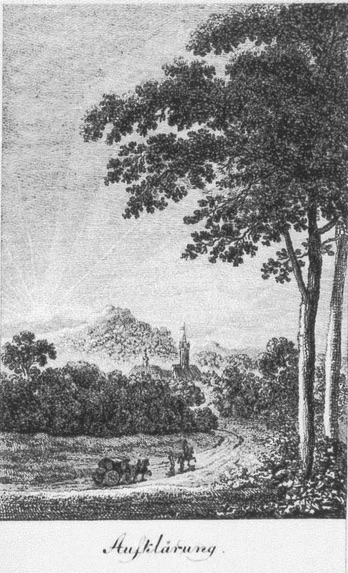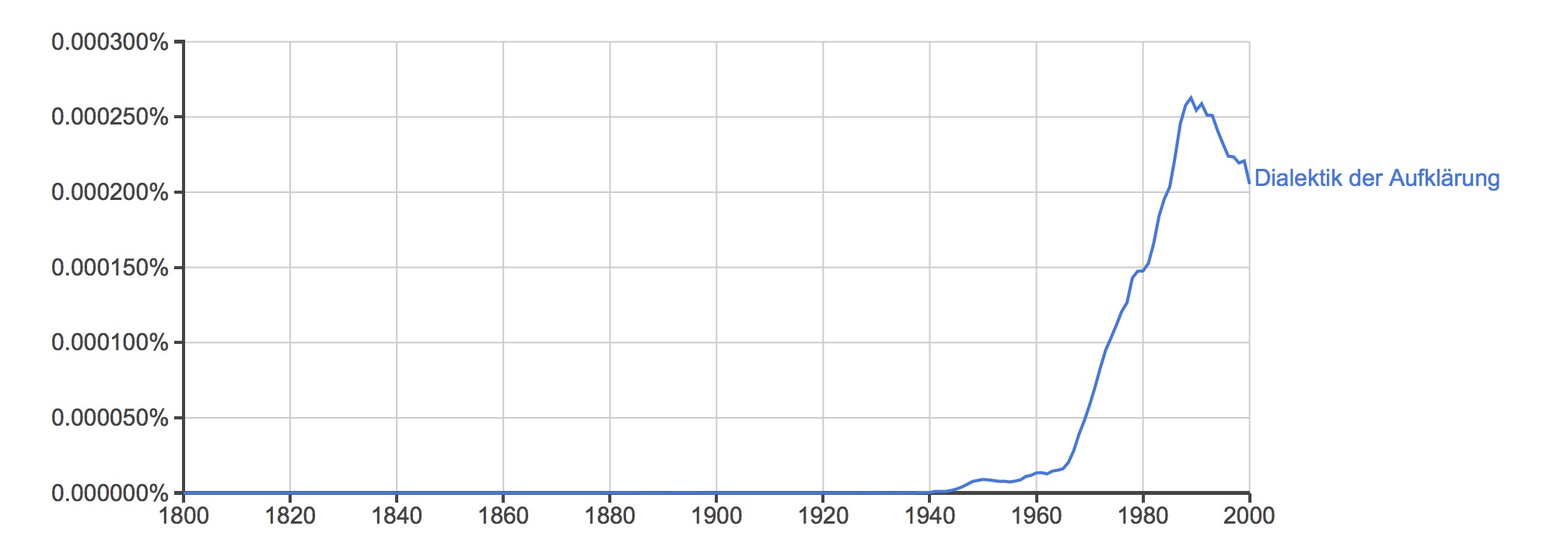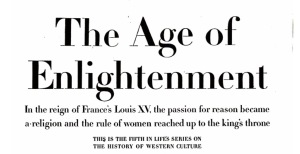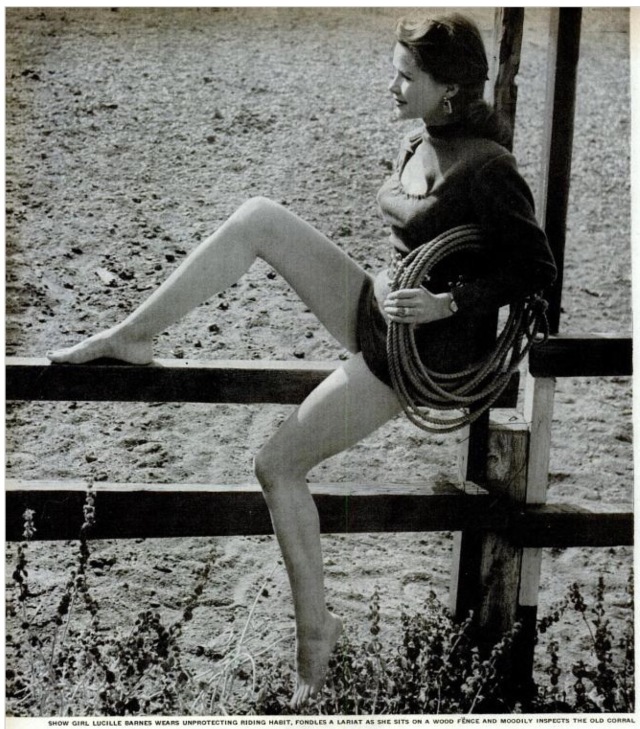 Readers of this blog are likely aware that, three years before its publication by Querido
Readers of this blog are likely aware that, three years before its publication by Querido
Verlag in 1947 , a preliminary version of Dialectic of Enlightenment circulated among friends and associates of the Institute for Social Research under the title Philosophische Fragmente. The text of the 1944 version differs in significant ways from the 1947 version and these differences have been meticulously documented in the 1987 critical edition produced for Horkheimer’s collected works by Gunzelin Schmid Noerr and his colleagues at the Horkheimer Archiv. These annotations, along with Noerr’s editorial afterword and a discussion of the significance of the changes by Willem van Reijen and Jan Bransen’s were carried over into Edmund Jephcott’s 2002 English translation.
Last May, I had the chance to meet Noerr at conference in Marburg on the Dialectic of Enlightenment that had been organized by Winfried Schröder and Sonja Lavaert and to acknowledge the debts that I (and, I am sure, many others) owe him. When I inquired, during our all-too brief conversations, about the availability of certain other Horkheimer manuscripts, I incurred yet another debt: he informed me that it was possible that what I was looking for might be available in the online archive of Horkheimer’s papers that was available from the Goethe Universitätbibliothek in Frankfurt. I wound up spending much of the summer working my way through the materials available on it. I incorporated some of the results of that research into forthcoming articles and, beginning with this post, will discuss other parts of it here.
This will be the first of two posts exploring the history of the production and distribution of the 1944 version. Though such questions have long been important for historians of the book, they have not, as far as I can tell, been of much interest to those of us who have been interested in Horkheimer and Adorno’s work. In light of the difficulties posed by works like Dialectic of Enlightenment this is, perhaps, understandable: the question of just what Horkheimer and Adorno were attempting to do in this enigmatic text has tended to overshadowed attempts at tracing the history of the work itself. And, since I am not a historian of the book, I should confess that the questions I am going to be exploring here are ones that I am not particularly well-equipped to address. As a result, what follows will no doubt wind up posing more questions than it answers.
I should also confess that I am concerned that what I will be presenting diverges on a few (though, fortunately, for the most part minor) points from the account offered by Noerr in his Editor’s Afterword to his edition. So Iet me begin by quoting his admirably concise account of the rationale for the genesis of the Philosophische Fragmente and then go on to indicate where my understanding of the implications of the manuscripts differs from his.
The reason for the decision initially not to commit Dialectic of Enlightenment to print was certainly not only the slender financial means and the uncertain academic, political, and geographical future of the Institute in the mid-1940s. This is indicated by the facts the hectographic edition was limited to about 500 copies and distributed only to specified recipients; that an American edition was not seriously considered; and, finally, that the text for the printed edition published three years later was subjected to thorough revision. None of this is surprising in the case of authors who were always concerned to ensure that their own theoretical utterances or those of others never became entirely detached from their systematic, historical, and social contexts.
In what follows, I will be arguing that
- The initial plans for the distributing the Philosophische Fragmente suggest a potential audience that went beyond a group of “specified recipients” to whom Noerr alludes.
- The process of revising the text — in part for theoretical, but also for “tactical” reasons — began as early as 1944 and at least some of these changes had already been incorporated in the 1944 version (which, in turn, was subjected to the further revisions that Noerr’s edition carefully documents).
- As a result it would appear that Horkheimer and Adorno had in mind something approximating an “American edition” of the work (albeit in a somewhat unorthodox form) even before they presented the work to its dedicatee on May 22, 1944.
I should also note two minor differences with Noerr’s account:
- All of the references that I have been able to turn up indicate an edition of 300 rather than 500 copies.
- It would appear that the text was a mimeograph rather than a hectograph.
Since Noerr has a far better understanding than I do of the relevant archival materials what follows are a set of conjectures that are offered for consideration and criticism (hence the rationale for posting it here rather than committing them to print). Whenever available, I’ve inserted links to the various materials on which I’ve drawn and look forward to any comments that might have about what I might have missed and where I have gone astray.
The Mimeograph and the Repeal of the Bourgeois Era
The Philosophische Fragmente originated as a gift for Horkheimer’s friend and colleague Friedrich Pollock and was presented to him on the occasion of his fiftieth birthday (May 22, 1944). But even before the manuscript was placed into the hands of its recipient, arrangements were being made for the production of a large number of copies of the text. In a letter to Lowenthal dated April 28, 1944, Horkheimer noted that he was devoting “every minute to the mimeographed issue” and asked Lowenthal, in his “usual office as censor” to review the text. Perhaps looking ahead to a further round of revisions that would undertaken should the work be published in a more conventional format, he advised Lowenthal, for the moment, to “overlook stylistic problems” since they would be “taken care of when it comes to the final printing of the completed work.” What mattered, for the moment, was a review of the manuscript “with a view to tactical matters.”
Horkheimer explained the rationale for such scrutiny as follows:
Since we intend to have an edition of about 300 copies, there should be no passages which would constitute a serious obstacle against a distribution to a somewhat larger circle.
The number of copies that were to be produced, along with the discussion of “stencils” ready for printing in the letter sent to Lowenthal the same day by Horkheimer’s secretary Margot von Mendelssohn, confirm that the planned volume would, indeed, be a mimeograph, rather than a hectograph. Indeed, all of the parties connected with the production of the manuscript consistently describe it as a “mimeograph,” rather than a hectograph and the final page of the copy of the Philosophische Fragmente in the Horkheimer Archiv carries a note that removes any doubt about the process used to produce the text:
This book is manufactured under wartime conditions in conformity with all Government regulations controlling the use of paper and other materials
Mimeographed by Herbert Herz, Hollywood, California
Searches in various public records confirm the existence of a Herbert Herz Company at 7176 Sunset Blvd as late as 1956, but provide little insight into what services it might have provided. There is also a listing for a Herbert Herz in the Los Angeles City Directory for 1942, which gives his home address as 1790 Sunset Blvd. For those who might be curious, Herz’s firm was located about 12 miles from Horkheimer’s residence in Pacific Palisades (Adorno’s home was two miles closer to it).
Hectographic copies are produced using a process that involved pulling images from a gelatin pad. While the process remained popular among artists, political radicals, and
 school children, by the middle of the twentieth-century it had largely been supplanted by the “ditto machines” or “spirit duplicators” that those of us of a certain age may still
school children, by the middle of the twentieth-century it had largely been supplanted by the “ditto machines” or “spirit duplicators” that those of us of a certain age may still
remember from our school days (I suspect that were I to smell one again, the past would invade my present). In contrast to these forms of reproduction, mimeographs were printed using a stencil mounted on an ink drum and yielded a product that more closely approximated a printed page. By 1944 the mimeograph had become the leading technology for reproducing texts in large quantities and it is possible that Herz’s firm possessed one of the automated models marketed by the A. B. Dick company, which — in an advertisement from the same year, touted the virtues of the machine as a way of replacing office workers who had been drafted into the war effort. In addition to the ability to produce a far larger number of copies than would be possible with the other available forms of reproduction, the machine’s use of stencils allowed for subsequent modifications of the text.
Adorno provided an odd testimony to the mimeograph in the gift that he presented to Max Horkheimer on the occasion of Horkheimer’s fiftieth birthday: Minima Moralia.
In a world where books have lost all likeness to books, the real book can no longer be one. If the invention of the printing press inaugurated the bourgeois era, the time is at hand for its repeal by the mimeograph [Mimeographie], the only fitting, the unobtrusive means of dissemination.
A technology that provided an “unobtrusive means of dissemination” was, of course, precisely what was needed to disseminate a work of daunting complexity written in a foreign language by two émigrés living at the epicenter of the culture industry. The ready availability of this particular technology allowed for this Flaschenpost to escape the uncertainties of an ocean journey. The few readers who wanted the text could get it the same way their fellow consumers got what they wanted: they could buy it.
On July 24, 1944, Adorno let his parents know that
the big mimeographed book by Max and myself, which is now finished, looks good and will be for sale from the autumn (191)
Though “unobstrusive”, the plan for the dissemination of this “book” that could “no longer be one” suggests that Horkheimer seems to have had something more in mind than its private distribution to a limited audience of friends and colleagues. A text that was grounded on the conviction that the “brief interlude of liberalism” had been supplanted by the iron hand of monopoly was, against all odds, about to enter a somewhat unlikely marketplace.
Marketing the Philosophische Fragmente
Margot von Mendelssohn’s letter to Lowenthal dated May 2, 1944 (i.e., twenty days before Pollock’s birthday) summarized the strategy for producing, copyrighting, distributing, and financing the book:
We intend to have 300 copies and contemplate selling them through maybe Salloch or other agents. Dr. Horkheimer even thinks of making some kind of prospectus for it. We want to give only a very limited number away to immediate friends and cover the not inconsiderable expenses through sale. For this reason we should have a publisher and I wonder whether we can bring it out as we did the Studies [i.e., Studies in Philosophy and Social Science] with “The Institute of Social Research, Morningside Heights, New York City” as publisher and the Copyright 1944 by Social Studies Association Inc. We would have the front page printed (as we had it with the German Project, as you will remember), about 280 copies stapled and fixed up as the Benjamin issue and 20 copies bound in stiff covers as the “de luxe” Benjamins.
Mendelssohn’s account of the publication plans indicates that, in effect, the Philosophische Fragmente exists in three different incarnations:
- First, there is the copy that was presented to Pollock on May 22. It would appear that this is the text (which, perhaps, survives in Pollock’s papers at Frankfurt) that, after further editing, served as the basis of the other two versions. Since the subsequent editing was carried on on existing mimeographed sheets, it is possible that the presentation copy was probably also a mimeograph as well, but not having seen this text (assuming it still exists) there is no way of knowing this for sure.
- There were also a limited number of “de luxe” editions, bound in stiff covers. These copies might best be understood as a sort of prestige object, to be given to close friends and associates of the Institute, but not available on the general public. We know, from Lowenthal’s letter to Horkheimer of August 10, 1944, that he was disappointed at not having received one of these treasured objects and asked whether the reason was that those copies were not yet available or if there was “any more serious reason behind it.” Given the amount of effort he had put into the production of the book, his disappointment was readily understandable.
- Finally, there are the other 280 copies of the book, which had paper covers and which would be sold as a way of generating the revenue for the “not inconsiderable expenses” involved in pulling off the entire venture. The text of this version, like the second, would differ from the copy presented to Pollock in that incorporated the revisions made to the text after its initial presentation. But, unlike the “de luxe” edition, it was intended for circulation beyond the charmed circle of friends and associates of the Institute.
In the draft of a telegram to Horkheimer dated May 13, Lowenthal indicated that he had reached an agreement with the agent to whom Mendelssohn had alluded in her letter.
REACHED AGREEMENT SALLOCH. PUBLISHER AND COPYRIGHT SAME AS STUDIES. TITLE PAGE AND IF POSSIBLE COVER SHOULD BE PRINTED. WE MIGHT CALL IT YEARBOOK AS ANNOUNCED. CIRCULATION 350. SALES PRICE $5,– SALLOCH DISCOUNT 40%. PLEASE RUSH TENTATIVE TABLE OF CONTENTS AND INDICATE APPROXIMATE PAGES AND DATE OF DELIVERY.
The next day Mendelssohn sent Lowenthal a telegram asking him to clarify whether the projected “German mimeograph issue” had to be “marked yearbook or special issue” (i.e., whether it would presented as a further volume in the Studies in Philosophy and Social and Social Science) or whether “such notes” could be omitted. She also inquired (presumably referring to the “prospectus” mentioned in her letter of May 2), “whether publisher note English or German.”
Lowenthal responded the same day with a telegram informing her that:
YOU ARE COMPLETELY FREE IN MAKING TITLE ON BYLINED NEW PUBLICATIONS. SALLOCH PROPOSED WORD YEARBOOK AS FACILITATING ADVERTISEMENT DOES NOT INSIST. PLEASE FURNISH PUBLISHER NOTE IN TWO LANGUAGES.
These exchanges, naturally, prompt the question: “Who is Salloch?” Thanks to the

William and Marianne Salloch
indispensable International League of Antiquarian Booksellers site we know that William and Marianne Salloch were booksellers who had come to New York in December 1936 and, three years later, founded “William Salloch, Old, Rare and Scholarly Books” at 334 E 17th Street. When William entered the US Army in 1942, Marianne assumed responsibility for running the business, which relocated to 142 Seventh Ave, South in Greenwich Village. The firm moved to Ossining, NY in 1957 and went on to become one of the most important American antiquarian booksellers, with a specialization in Renaissance and Baroque literature.
It is not clear how Horkheimer came into contact with Salloch, but from 1940 onward Studies in Philosophy and Social Science (the title adopted for the English language editions of the Institute’s journal) directed inquiries regarding “subscriptions and business correspondence” to the Salloch’s address. All of the correspondence involving the sale of Philosophische Fragmente was with Marianne Salloch and, as the exchange of letters between Lowenthal and Mendelssohn indicates, their firm had been involved in the Institute’s earlier venture in producing mimeographed volumes: its 1942 memorial volume for Walter Benjamin, Walter Benjamin zum Gedächtnis
Revising the Manuscript
Plans for the distribution of the Fragmente proceeded apace into June. By the middle of the month, Lowenthal had completed a review of the manuscript and sent Horkheimer an enthusiastic, albeit somewhat enigmatic, telegram praising the work. Horkheimer responded on June 14 with a lengthy letter that began by observing, “it is a fine thing that you like the book and I hope that the second part will still be much better.“ The “second part” would appear to be a reference to the projected, but never completed, sequel, which would carry out the formidable task of explaining how enlightenment might be rescued from the catastrophe that had befallen it.
That Horkheimer speaks of a “second part” of the book, rather than a “second book” is consistent with a somewhat enigmatic passage in the 1944 preface (which was removed from the 1947 version) stating:
If the good fortune of being able to work on such questions without the unpleasant pressure of immediate purposes should continue, we hope to complete the whole work in the not too distant future. ….
This passage should serve as a reminder that Philosophische Fragmente was regarded by its authors as an incomplete work, requiring further elaboration before it could take its place among more conventionally published works. We know, from one of Adorno’s letters to his parents that, sometime before the beginning of May 1944, Querido Verlag accepted the Fragmente for publication. It is conceivable that Horkheimer and Adorno had (at least initially) intended for this projected revised version to incorporate the promised “second part.” But what would eventually be published in 1947 consisted of a revised version of the 1944 edition that adopted somewhat more circumspect language and eliminated the confessions of its incompleteness but did not provide an explanation of how the “rescue of enlightenment” might be effected.
But in the summer of 1944 Horkheimer’s concern was less with the completion of the Fragmente than with preparing what had already been written for distribution. He saw two tasks as paramount: 1) the completion of Lowethal’s revision of the manuscript that had been presented to Pollock in May and 2) the writing of a prospectus for use in Salloch’s catalog.
Lowenthal provided Horkheimer with a list of proposed revisions on June 17, 1944. His proposed changes fell into four categories:
- “Serious Problems”: which consisted of “strongly recommended” changes (and which, he estimated, would require the production of 10 or 20 new stencils).
- A revised table of contents
- A list of infelicities (Schoenheitsfehler) that could be addressed by making slight corrections on existing stencils
- A list of other possible changes that, while not imperative, could be made in those cases where Horkheimer found something else on the page in need of revision. The rationale here would appear to be that, since the stencils would need to be redone to incorporate Horkheimer’s proposed revisions, the replacement of the stencil would provide an opportunity for making other changes
Beyond providing a sense of the laborious process involved in the editing of mimeographs, Lowenthal’s lists reveal much about his function as Horkheimer’s editor and censor.
He began his list of “serious problems” with a general statement of his concerns:
I am concerned with two possible danger spots: with formulations which may bring about the impression that democratic society is everywhere conceived as a preceding stage to fascism, and with formulations which, if taken out of context, and use maliciously, may create the impression that the program of free love is proclaimed.
A series of suggestions for reformulations — and, in one case, the confession that “I don’t quite now what to do, but I am a little bit scared. In addition I do not understand the sentence” — followed.
But what may well be Lowenthal’s most puzzling change involves the “revised table of contents.” The proposal he sent to Horkheimer is precisely the table of contents that readers are accustomed to seeing, which prompts the question of how, exactly, the text that had been presented to Pollock had been organized. Unfortunately, I have found nothing in the Horkheimer papers to suggest what the original table of contents looked like (this, again, is a question that can only be decided by someone with access to the presentation copy of the Philosophische Fragmente).
Producing the Prospectus
The completion of the prospectus proved to be somewhat more problematic, in part because it was not immediately clear who would be responsible for undertaking it and, in part, because it became bound up with disagreements between Horkheimer and Lowenthal about the advisability of soliciting endorsements of the work from well known authors. In a laconic aside in a letter to Lowenthal dated June 14, Horkheimer made it clear that he was far too busy with other matters to be bothered with the chore of preparing the prospectus and also expressed doubts that it would be possible to come up with an appropriate endorsement:
As far as the prospectus is concerned, I think that you and Salloch can easily concoct a sensational text. If there were an American writer or scholar who could not only really appreciate this document, we might use his judgment for the prospectus but I fear there is no one among the well-known authorities would fulfill these two requirements set the time. Huxley, as far as I know, does not read German, and Joyce is dead.
With the burden of writing the prospectus now placed squarely in his hands, Lowenthal sent Horkheimer a telegram asking him to approve the publication of a “preannouncement” of the “mimeographed book” in Salloch’s next catalog. Suspecting, perhaps, that he was unlikely to get a prompt response from Horkheimer, he phoned Pollock and, two days latter, wrote a letter to him requesting clarification concerning what they had decided:
I did not quite understand what you told me over the phone: whether you said things should now be arranged in a hurry, or we should not hurry. Because of this uncertainty, have refused so far Mrs. Salloch’s wish to announce in a book catalog, title, table of contents and short description.
At the same time, Horkheimer sent a telegram indicating that any announcement of the book should be postponed for a few more weeks:
GRATEFUL FOR MRS SALOCHS [sic] IDEA BUT SHOULD RATHER WAIT TWO OR THREE MORE WEEKS BEFORE OFFICIAL ANNOUNCEMENT.
A letter followed explaining the rationale for his decision: with the American Jewish Committee considering whether to approve the Institute’s proposal for a series of books on the nature of prejudice, the ever-cautious Horkheimer had concluded that it would be “better policy” to delay. The letter also indicates that the actual production of the mimeographs was nearing completion and that 250 copies would be sent “straight to Mrs. Salloch.”
Lowenthal pressed forward and, in the beginning of August, wired Horkheimer requesting two copies of the text for use in “approaching people” to write endorsements of the book. He followed it with another telegram suggesting
approaching [Reinhold] Niebuhr, [Paul] Tillich through me [Dorothy] Thompson through Niebuhr, Lindemen Fisher through [Paul] Massig, [Charles] Beard through Pollock.
Once again, Horkheimer demurred and responded with a telegram requesting that Lowenthal “not approach anyone before our previous understanding” since the “names on your list are not the right ones.” His draft of the telegram was somewhat sharper in tone:
By no means approach any names of your list. They are the ones against whom the book is written.
A letter followed that, adopting some of the rejected formulations in the telegram, reiterated his reservations:
I want to confirm my own wire with which I asked you to forget about the complicated strategy of approaching people in behalf of the “Fragmente”. it seems to me that almost all the names you mentioned belong to persons are definitely supposed to be the targets and not the sponsors of the book.
But at this point, with plans for distributing the mimeographed text apparently at a standstill, another bookseller entered the picture.
To be continued …
-
- Gunzelin Schmid Noerr, “The Position of the ‘Dialectic of Enlightenment’ in the Development of Critical Theory,” Editor’s Afterward to Max Horkheimer and Theodor W. Adorno, Dialectic of Enlightenment, trans. Edmund Jephcott, (Stanford: Stanford University Press, 2007), 217-247. ↩
-
- Noerr 237-238 ↩
-
- For reasons that will be explained below, it is not entirely clear whether this plan was actually carried out. ↩
-
- The same concern with vetting the text for a wider audience can be found in Adorno’s letter to his parents of May 10, 1944, which states, “Max and I are adding the finishing touches to our mimeographed book, which now bears the title ‘Philosophical Fragments.’ Gretel is going through it for corrections — also political ones. [emphasis mine]” Theodor W. Adorno, Letters to His Parents: 1939-1951, ed. Christoph Gödde and Henri Lonitz, trans. Wieland Hoban (Polity, 2006) 184. ↩
-
- There is a record of the firm’s dissolution, after 60 years, 11 months of existence. ↩
-
- See also Lowenthal’s report to Horkheimer of June 17, 1944 on corrections and revisions to the Fragmente, discussed below. ↩
-
- Minima Moralia #30 “Pro demo rostra”. The subsequent career of the mimeograph in the political, literary, and sexual undergrounds of the 1950s and 1960s confirms Adorno’s prescience. See, for example, John Mcmillian, “‘Our Founder, the Mimeograph Machine’: Participatory Democracy in Students for a Democratic Society’s Print Culture,” Journal for the Study of Radicalism 2:2 (2009): 85–110, Chelsea Jennings, “Pirating Pound: Drafts & Fragments in 1960s Mimeograph Culture,” Journal of Modern Literature 40:1 (2016): 88–108, Robert L Nelson, “Soldier Newspapers: A Useful Source in the Social and Cultural History of the First World War and Beyond,” War in History 17:2 (2010): 167–91, Rodger Streitmatter, “Lesbian and Gay Press: Raising a Militant Voice in the 1960s,” American Journalism 12:2 (1995): 142–61, and Joseph Barbato, “The Rise and Rise of the Small Press,” Publishers Weekly 244, no. 31 (1997): 39–48. ↩
-
- It is unclear whether this telegram was actually sent. It differs from the copy of Lowenthal’s receipt for the telegram sent on May 14. I have yet to locate a copy of the telegram that Horkheimer actually received. ↩
-
- The ILAB site offers a partial translation of the entry on Salloch in Ernst Fischer, Verleger, Buchhändler & Antiquare Aus Deutschland Und Österreich in Der Emigration Nach 1933. Ein Biographisches Handbuch (Stuttgart: Verband Deutscher Antiquare e.V., 2011). For a brief memoir of the émigré booksellers in New York, see the 1986 lecture by Bernard M. Rosenthal, “The Gentle Invasion” at the Institut d’histoire du livre. ↩
-
- Searching for “Salloch” on the Hathi Trust turns up a number of scanned antiquarian volumes that include a small sticker with the name of the firm. ↩
-
- See the notices on the contents page of Vol. VIII:3 (1939) and the penultimate pages of the three numbers that constituted Vol. IX (1940) ↩
-
- While copies of the Philosophische Fragmente can be found in a few American libraries, copies of the Benjamin volume are quite rare. WorldCat list only five. The sole North American copy was the copy owned by Hannah Arendt and is preserved in her papers at Bard College. ↩
-
- Horkheimer and Adorno, Dialectic of Enlightenment 254. ↩

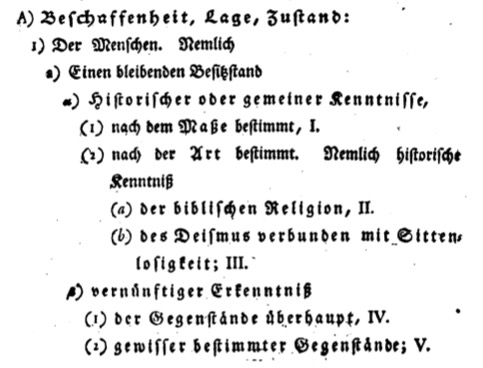




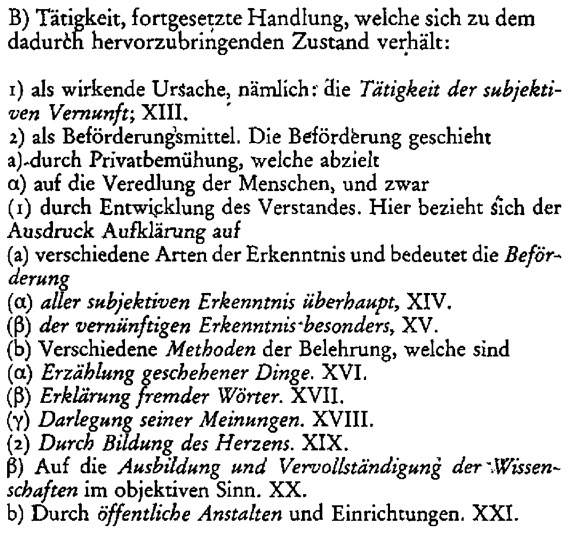
 Bavarian bookseller Georg Rosenberg, she had begun working in her parents’ store as a teenager and assumed responsibility for the firm after his death in May 1933. The store’s stock was almost immediately confiscated by the National Socialist regime as part of its actions against Jewish-owned business. Permitted to sell books to Jewish customers only, she continued to operate a mail order business from her home until the outbreak of hostilities, at which point she escaped to England and then to the United States, where she opened an antiquarian bookstore in her apartment in January 1940, buying books from émigrés in need of money and selling them to émigrés with a need for books. She went on to become one of the more successful émigré booksellers and, by 1944, had established a close working relationship with the Los Angeles émigré publishers Felix Guggenheim and Ernst Gottlieb.
Bavarian bookseller Georg Rosenberg, she had begun working in her parents’ store as a teenager and assumed responsibility for the firm after his death in May 1933. The store’s stock was almost immediately confiscated by the National Socialist regime as part of its actions against Jewish-owned business. Permitted to sell books to Jewish customers only, she continued to operate a mail order business from her home until the outbreak of hostilities, at which point she escaped to England and then to the United States, where she opened an antiquarian bookstore in her apartment in January 1940, buying books from émigrés in need of money and selling them to émigrés with a need for books. She went on to become one of the more successful émigré booksellers and, by 1944, had established a close working relationship with the Los Angeles émigré publishers Felix Guggenheim and Ernst Gottlieb.

 Readers of this blog are likely aware that, three years before its publication by Querido
Readers of this blog are likely aware that, three years before its publication by Querido school children, by the middle of the twentieth-century it had largely been supplanted by the “ditto machines” or “spirit duplicators” that those of us of a certain age may still
school children, by the middle of the twentieth-century it had largely been supplanted by the “ditto machines” or “spirit duplicators” that those of us of a certain age may still
 shorter and nights grow longer. Since I am prone to a mild case of
shorter and nights grow longer. Since I am prone to a mild case of 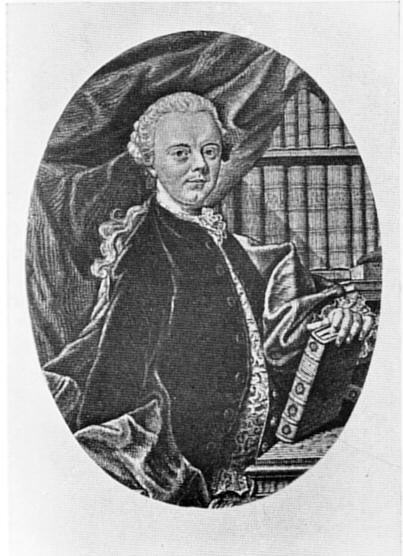 pieces in my What is Enlightenment? collection, though searches on the web suggest that Anglophone scholars have had little interest in him. He had a lengthy career as a civil servant who (aside from a stint at the court of Joseph II Vienna) spent most of his time in the smaller German courts (including service at the beginning and end of his life at Darmstadt). At the same time he managed to make a name for himself as a writer with a series of works on statecraft and politics (e.g., his 1759 Lord and Servant and a Montesquieu-inspired contribution to exchanges on the nature of the “German national spirit” dating from 1765).
pieces in my What is Enlightenment? collection, though searches on the web suggest that Anglophone scholars have had little interest in him. He had a lengthy career as a civil servant who (aside from a stint at the court of Joseph II Vienna) spent most of his time in the smaller German courts (including service at the beginning and end of his life at Darmstadt). At the same time he managed to make a name for himself as a writer with a series of works on statecraft and politics (e.g., his 1759 Lord and Servant and a Montesquieu-inspired contribution to exchanges on the nature of the “German national spirit” dating from 1765).

 But in Verhelst’s engravings , fire is something that must be carefully contained, lest it inflame rather than enlighten. The consequences of a flame that escapes the confines of the lantern is apparent from the inferno raging on the horizon. And while the starry sky above still offers (as it had in Plato’s allegory) a means of orientation, the stars are already being obscured by the clouds that pour from a conflagration that — begun in Paris — now threatens to consume the world.
But in Verhelst’s engravings , fire is something that must be carefully contained, lest it inflame rather than enlighten. The consequences of a flame that escapes the confines of the lantern is apparent from the inferno raging on the horizon. And while the starry sky above still offers (as it had in Plato’s allegory) a means of orientation, the stars are already being obscured by the clouds that pour from a conflagration that — begun in Paris — now threatens to consume the world.